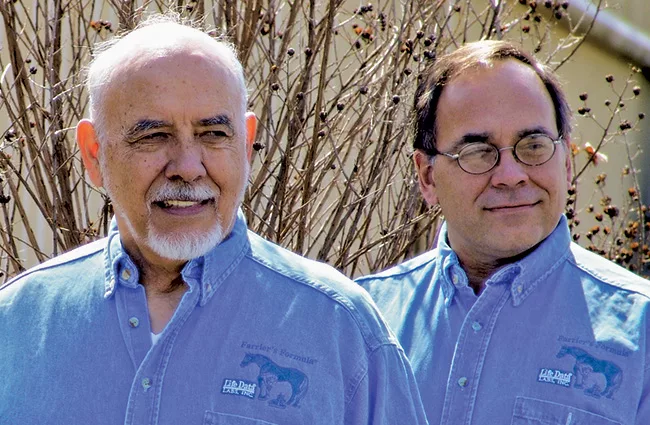American Farriers Journal
American Farriers Journal is the “hands-on” magazine for professional farriers, equine veterinarians and horse care product and service buyers.

J. Frank Gravlee, DVM, MS. CNS, (left) is the founder of Life Data Labs, Inc., in Cherokee, Ala., and the developer of Farrier’s Formula. H. Scott Gravlee, DVM (right) is an equine nutrition consultant with Life Data Labs.
There’s been a vast amount of information published in scientific horse industry literature concerning the causes, prevention and treatment of thrush. Although often overlooked, proper nutrition can promote the development of healthy hoof tissue with better characteristics to help prevent or control thrush.
Thrush develops in the equine foot when bacterial organisms begin populating the dark and moist crevices, or sulci, of the frog. These organisms thrive and divide in oxygen-poor anaerobic environments, which are often contaminated with moist organic material.
All horses are exposed to the opportunistic organisms causing thrush that are common in both the soil and environment. High humidity or wet environments predispose horses to thrush. Once the organisms begin dividing in the frog’s sulci, the stage is set for a progressive invasion and subsequent infection of the frog tissue.
The blocking of oxygen to the frog’s tissue and surrounding areas will predispose a horse to developing thrush. Oxygen can be blocked to the foot tissue from the use of hoof pads, boots or the application of grease and oils to the foot. Many strong substances — such as formaldehyde, copper sulfate and chlorine — are caustic to live tissue. These chemicals denature the proteins in the external layer of the tissues and thereby reduce the ability of oxygen to penetrate.
In white line disease, the first line of defense from environmental microbes invading the hoof capsule is a sound hoof wall structure.
Dr. Susan…